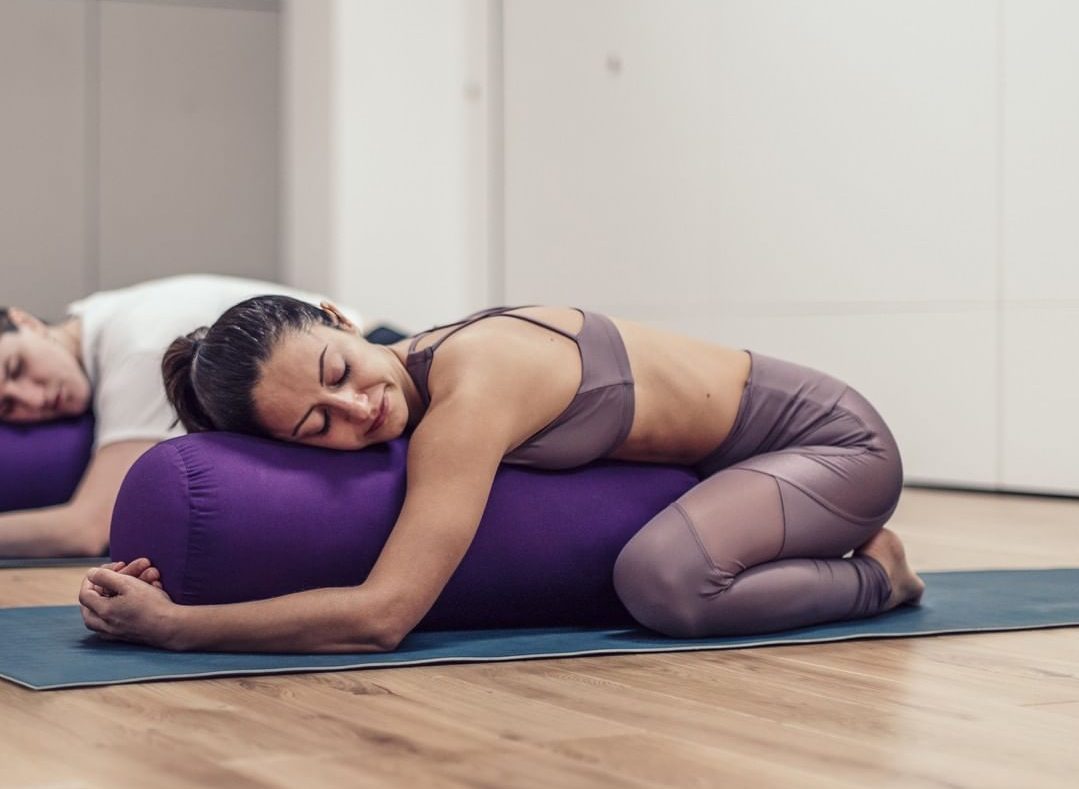Restorative yoga
Restorative yoga is a gentle style of yoga where no intense body work is sought. The goal comes down to one thing: to do nothing. Too easy would you say? And yet, this often proves to be much more difficult than it seems. Want to know more about this type of yoga? What is Restorative Yoga? How does a session take place? Who is it for? I explain everything in this article.
Restorative yoga, a story of time...
In today's world, we don't have time. You probably won't even have time to read this entire article. Maybe it's already too late. That the tab is already closed before you have even crossed this line.
But I don't blame you. Because right now, I realize that I don't have the time either. I don't have it, or rather I don't take it. Yes, in the end, my days consist of 24 hours like everyone else. So why are some people able to carry out all their projects at once, giving themselves the luxury of taking a few moments for themselves every day? While others, like me, see the hours fly by at breakneck speed because the damn time goes by too fast? Why do some stay calm, organized, efficient, while others waver under their to-do list?
I'm going to be a mom in a few months and I promised myself that I wouldn't get caught up in this wave that seems to be swallowing everyone up. Faster and faster, more and more intensely. So, until recently, my yoga practice was focused on dynamic exercises, intense sessions. However, since the beginning of my pregnancy, I've had the opportunity to slow down a bit. There are things that I can no longer do as I used to. So I adapt my sessions, I stay still more often. And you know what? How good that feels!
I discovered Restorative Yoga naturally, during that period of my life when my body and mind need to be listened to, and I fell in love with it. This yoga where we are afraid of being bored (because yes, doing nothing for an hour is not very rewarding for our ego), I love it! And I think it would be so beneficial for all of us. Are you ready to give yourself this gift? Then let's see what it's all about...
What is Restorative Yoga?
Restorative yoga is a gentle style of yoga that corresponds to a very ancient form of yoga also called Vishranta yoga. A session of Restorative Yoga will be open to all audiences. It gently mobilizes the body. Its goal is to release all tensions, both physical and mental. Thus, this is the style of yoga that we will enjoy practicing when we have a drop in energy, feel sad or simply to take care of ourselves.
In addition, restorative yoga is sometimes called "supported yoga". In fact, during classes, you will use a lot of supports to help you relax such as blankets, yoga bricks, bolsters (a kind of bolster) or eye cushions. I will tell you more about this at the end of this article.
The posture is often very simple to adopt. However, it is gravity that will help to loosen muscles and relax. In restorative yoga, we don't try to stretch to the maximum, but rather to let the body go into the ground, to relax. For you, it's absolute tranquility. We don't ask you to do anything complicated. You have time for yourself, nothing to do, no one to please. Wow! How it makes you want to!
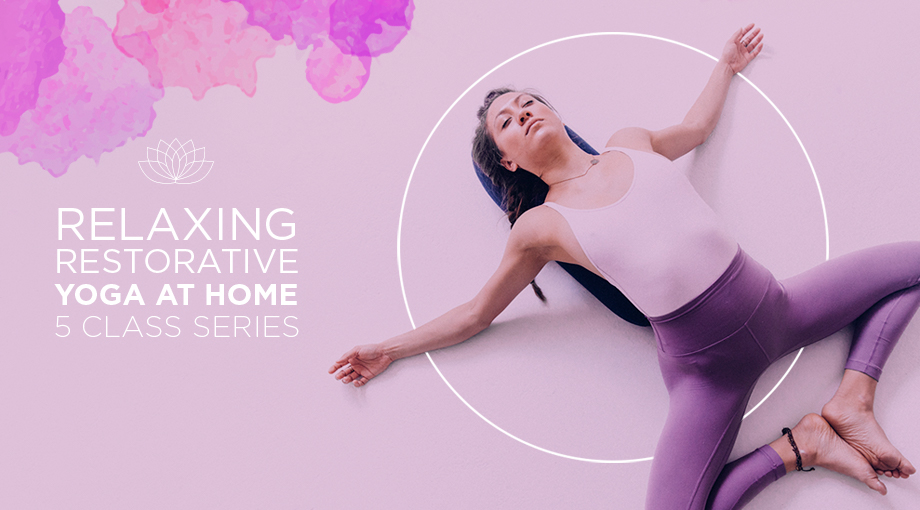
How does a session take place?
A restorative yoga session usually consists of a few simple yoga postures, often while sitting or lying down. If at the beginning of the session some movement can be brought into the body, most often the postures will be kept still for a few minutes. This will allow tensions to dissipate little by little. In addition, the gentle movements that we will perform will allow us to evacuate the knots of tension that hold our emotions within the body. Each session will therefore contribute to a more harmonious flow of energy within us. This total relaxation will often lead to some effects on our mind.
In addition, during each session, we will pay attention to our breathing. It must be deep and conscious. It is the breath that gradually helps us to release ourselves and to evacuate our tensions.
Unlike other styles of yoga, the postures do not require any sustained effort. During a session of restorative yoga, you will not necessarily work your muscles, your flexibility or your balance with intensity. Everything will be done gently. You won't have to make any effort during this type of session.
Finally, each session offers several relaxation positions such as Shavasana. And in each posture, you can always be supported by accessories so you won't feel any discomfort.
Who is Restorative Yoga for?
There is a tendency to point out that people suffering from depression, stress, anxiety, sleep disorders, fibromyalgia will find deep well-being in the practice of restorative yoga.
Nevertheless, I am convinced that this form of yoga is excellent for everyone and that it should become a more common choice.
Indeed, I myself tend to turn to dynamic styles of yoga, where I will be able to move, exercise and sweat. Perhaps our hectic lifestyles make us think it's best to keep up the momentum into our yoga practice. And yet, when I practice restorative yoga, I feel that I am nourished internally much more intensely than with other styles of yoga.
Ultimately, restorative yoga is a practice that teaches us to be kinder to ourselves. We learn to listen to ourselves and to take the time, really, to do good for ourselves. These principles are essential in our lives, yet so often forgotten in our daily lives.
If you too appreciate dynamic styles of yoga, you won't be bored in a restorative yoga class. On the contrary! You will taste the joys of slowing down and taking care of yourself. And that will have wonderful consequences on the rest of your activities. This practice will help you approach the world and your to-do list with more serenity. It brings you back to yourself, reminding you that you are your only guide...
Finally, restorative yoga also offers you a moment to calm your mind, to listen to how you really feel and sometimes even touch your inner strength or truth. Thus, a session of restorative yoga allows you to be more easily at your service, available to meet your needs.
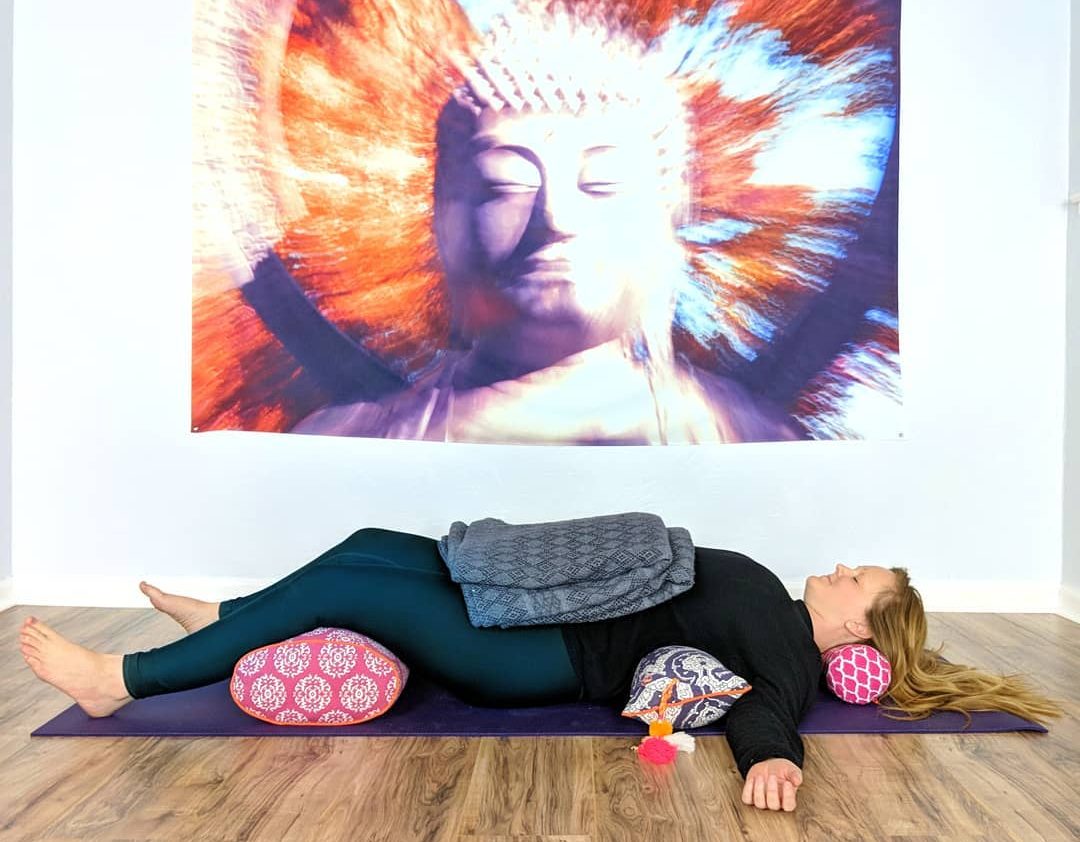
Is this style of yoga difficult?
Yes, I would even say that restorative yoga is a real challenge for the modern human being.
Indeed, in this type of yoga, we seek immobility in the postures. An immobility of body and mind. However, when we want to think about nothing and to remain calm, it is often there that our thoughts start to take all the place. Our anxieties rise again. We think about everything there is to do afterwards. All the things we did before and that we could have done differently. In short, it takes time to reach calm during these classes. For most of us, it could probably take a lifetime. Nevertheless, we can feel all the benefits of this practice despite it.
On the other hand, another aspect that is difficult in restorative yoga is the silence that takes place during the session. Of course, a musical background can be present and help to calm down a little more. But apart from that, you will notice that your teacher does not guide you once the posture is taken. No meditation, no inspiring speeches. You are alone, facing yourself and your mind. What does he tell you? Are you ready to listen to him? Are you ready to make room for him?
That silence that we are so uncomfortable with today, as we rush to turn on the TV as soon as we get home. That silence that makes us feel lonely too. Without a cell phone to scroll on. Without a notice to watch to escape it. Here, it's just you and him.
In Restorative Yoga, we are alone, in silence, doing nothing, while time passes. Of course this is complicated. But at the same time, isn't it the most delightful thing in the world to be able to treat ourselves to this kind of moment?
Indeed, giving ourselves this time allows us to take a step back from what we are experiencing, to observe things from a new angle, to listen to our anxieties or our needs of the moment and to make room for them. It is so, so important. The risk of our hectic lives is often to forget ourselves. So a restorative yoga session is a great gift to give yourself every week. It will become an appointment with yourself.
Finally, for the body, restorative yoga will be ideal for people who cannot make a sustained effort, because of a pathology or an injury for example. Also, if you are pregnant, this type of yoga should bring you a lot of benefits.
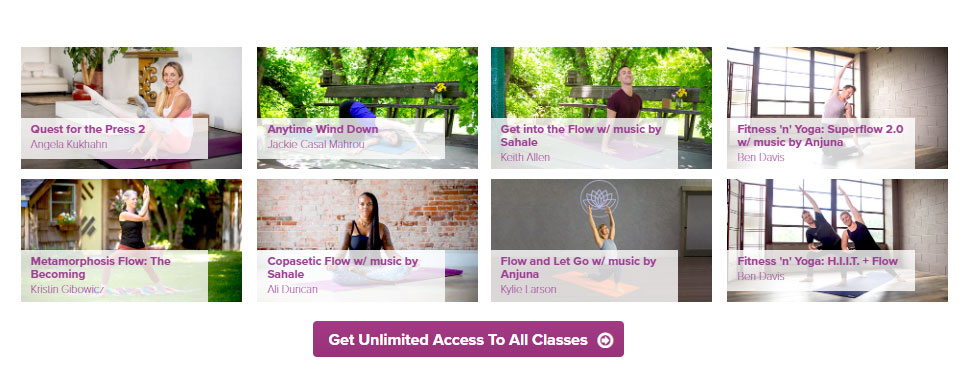
What are the benefits of Restorative Yoga?
Restorative yoga is an excellent way to open a door within us to let in new energies, often more soothed or positive. During our session, we will evacuate our emotions, let all our concerns flow.
In addition, stress and fatigue generally lead to a cascade of negative emotions (sadness, anger, frustration) and sometimes even physical pain (headaches, backache, insomnia). Therefore, giving yourself time to listen to your feelings and let them go will naturally help to reduce all these effects. Your restorative yoga session will be an excellent way to listen to you and let go of anything that doesn't suit you.
In fact, you may even start crying during your class, which is perfectly normal. Indeed, these yoga sessions allow us to take stock of our psychological state. Thus, what we retain deep inside of us tends to resurface.
It is not uncommon to feel tired during our week. But there is a fatigue that is more and more common and yet totally neglected in our society: psychic fatigue. Sometimes, you are fed up, you are tired... In this case, restorative yoga, just like Yoga Nidra, will bring you a lot of well-being. Indeed, it will allow you to put your mind at rest, far from the permanent stimulations of your entourage, your telephone, the television or the surrounding noises.
Similarly, if you are feeling tired at the moment, you will notice that taking a nap will sometimes do you more harm than good. On the contrary, restorative yoga will allow you to completely rest your body and mind while remaining in a state of semi-consciousness. This will give you a considerable boost of energy and a new energy level.
To help with this, restorative yoga postures are often very comfortable, with lots of supports and props to support you completely. All you have to do is relax, breathe, listen to yourself. This will allow you to calm down. You will feel it after each session.
Restorative Yoga vs. Yin Yoga
Often there is a tendency to equate Yin Yoga with restorative yoga. Indeed, in these two styles of yoga, we will hold the postures for several minutes, looking for immobility. However, these two forms of yoga are ultimately very different.
On the one hand, in Yin Yoga, the postures are held for several minutes in order to completely relax the body. The goal is mainly to improve flexibility. This notion is really at the base of Yin Yoga. It is therefore possible that you may come out of a Yin class with the impression that you had a fairly intense session, even if you didn't move much.
However, in Restorative Yoga, the postures are held for a long time simply to relax and let go. There is nothing at stake with respect to the body other than easing our tensions. We don't want to do anything special. We don't want to work on this or that part of the body. It's just a moment to stop being in the action!
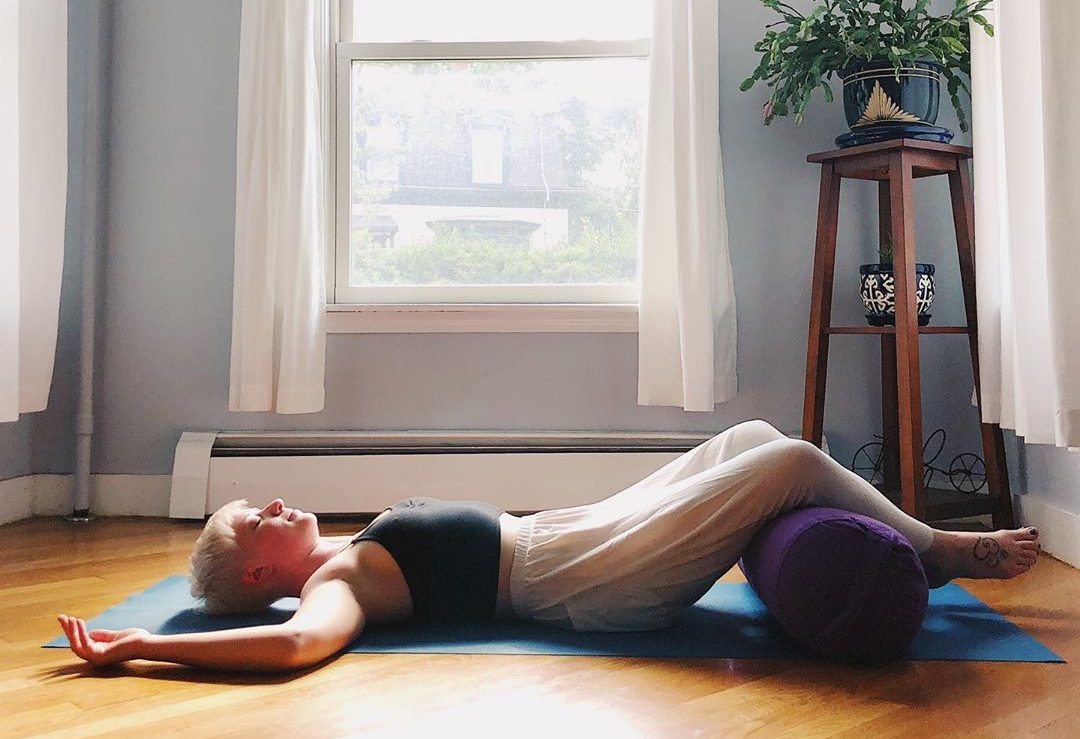
History of Restorative Yoga
But in fact, you may wonder where this style of yoga comes from?
First of all, restorative yoga would have a much older origin than the one I will explain to you today. Indeed, it refers to what is called Vishranta Yoga. Nevertheless, it seems that this origin remains rather mysterious, since it is difficult to find information about it.
Moreover, if Restorative Yoga has developed in recent years around the world, it is thanks to the work of Judith Hanson Lasater. This woman is a former student of BKS Iyengar.
What props are used in Restorative Yoga?
During the sessions, we use props that are quite common in yoga such as bricks or straps. However, the strap will often be tied around the body to allow the legs to rest for example. But there are also many objects specific to restorative yoga:
- The bolster: this big cushion looks like a bolster. It allows you to lie on your child's back or in a posture while being fully supported. One can thus rest completely in the posture.
- The Eye-pillow : it is a cushion that is placed on the eyes to stimulate the oculo-cardiac reflex and thus reduce the heart rate. It allows a deeper relaxation.
- Blankets: they are used either to wedge the body a little more in the posture or to cover oneself. The body temperature drops naturally when you relax and the cold can quickly become uncomfortable.
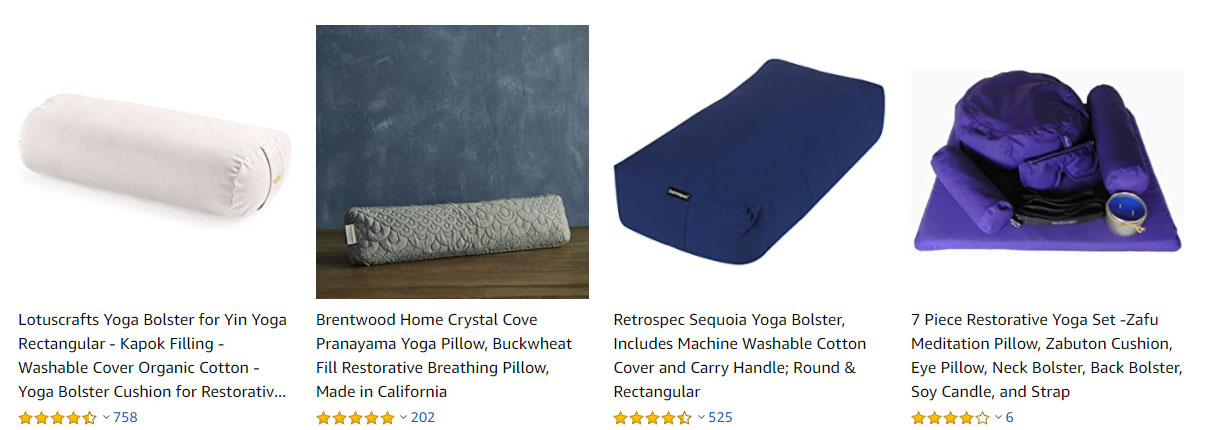
Finally, the restorative yoga props support the body in the posture, but also awaken the sense of touch. One then finds the sensation of being supported, but also touched, as in skin to skin, when one was a baby. Thus, in general, this immersion in our memories brings us back to a deep feeling of calm and well-being.
Are you ready to take the time and treat yourself to your first session of restorative yoga? Then, don't hesitate to come back and tell me what benefits you have found in this practice and share all your feelings in the comments space. Please also feel free to take the time to leave a comment if you liked this article. Namaste.


